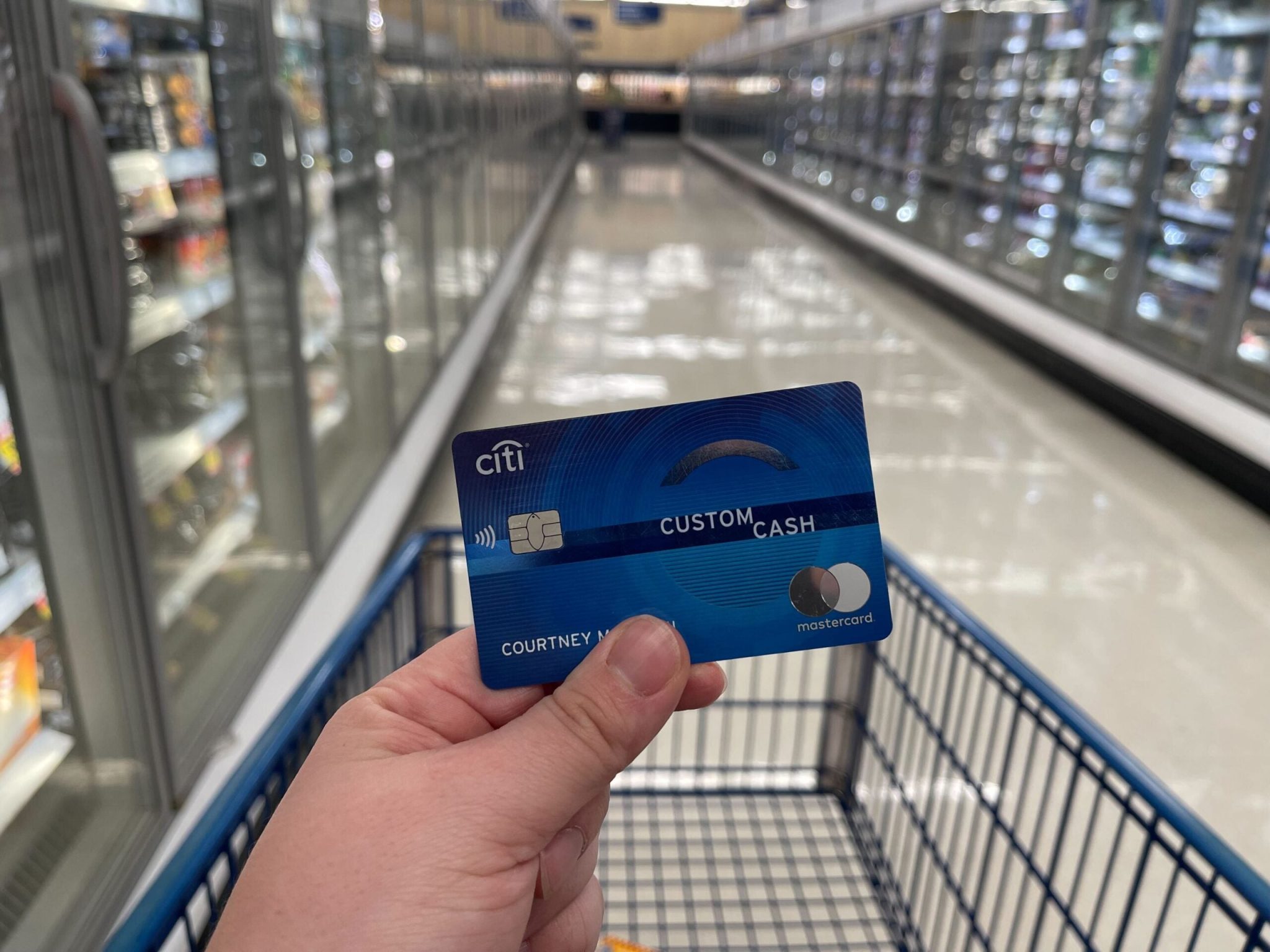Key takeaways
- Americans spent an average of around $6,000 on food at home in 2023, a 6.1 percent increase from 2022.
- Grocery store category spending caps on credit cards haven’t increased to keep up with inflation.
- As credit card companies profit more than ever from fees and interest, they should increase spending caps for bonus category rewards.
Inflation is hitting Americans hard despite finally slowing to pre-pandemic levels as of September 2024. And many people are feeling it most when paying for essentials like housing, utilities and insurance. Most notably, grocery store prices increased 25 percent from 2019 to 2023 and rose faster than most other major spending categories, according to the U.S. Department of Agriculture’s (USDA) Economic Research Service.
I wince when I see my grocery bill at the check-out line, too. Despite buying generic-brand items when possible, choosing non-organic (cheaper) produce and sticking to simple meals, a typical grocery store haul for my family of two adults and a baby starting solids typically costs between $100 and $200 a week.
The smart use of a cash back credit card can help soothe the sting of inflation, especially on regular purchases like groceries. But they’ll lose their effectiveness unless issuers update their cards to keep up.
As a personal finance journalist who specializes in credit cards, I have a message for issuers: It’s time to increase spending caps on grocery store categories to better serve cardholders who use their cards to shop. In my nearly four years of researching and writing about credit cards, I’ve never seen a major credit card issuer increase a spending cap on a bonus category despite prices steadily rising and companies making more profit than they did in 2019.
Average grocery costs are increasing
The most recent Bureau of Labor Statistics Consumer Expenditures shows that Americans — whether a single-person household or a family of four — spent an average of $6,053 on food at home in 2023, a 6.1 percent increase from $5,703 in 2022. But this is just an average. Your spending may differ depending on your city, family size and grocery store options.
For example, the USDA releases monthly food plans, which include the department’s estimated grocery costs for a nuclear family of four to prepare all meals and snacks at home while still meeting nutritional needs. The USDA’s Thrifty Food Plan for a family of four — the lowest-cost example — costs an average of $983.80 per month in November 2024.
The problem with grocery store credit cards
Many cards offer boosted rewards rates at the supermarket checkout line. But those rewards rates have increasingly meaningful limits.
Here are some of the most popular cards and their spending caps:
The Capital One Savor Cash Rewards credit card is a rare card that earns unlimited (3 percent) cash back on grocery store purchases (excluding superstores like Walmart and Target).
As grocery spending increases, shoppers will hit spending caps on grocery or supermarket purchases more quickly. If you spend the USDA’s thrifty food plan average of $980 at the grocery store every month ($245 a week), you’ll hit the Citi Custom Cash’s $500 billing cycle cap in three weeks; the Blue Cash Preferred and Blue Cash Everyday’s $6,000 annual cap in about 6 months; and the Bank of America’s $2,500 quarterly cap for 2 percent on grocery store and wholesale clubs well before the end of the quarter (assuming you don’t use the 3 percent category).
At that point, these cards only earn 1 percent back at grocery stores and supermarkets. Factor in fees like the Blue Cash Preferred’s $95 annual fee after the first year, and cards with bonus category spending caps don’t have the same value as they used to. And it will only get worse if spending caps stay the same even as grocery store prices continue to increase.
Issuers: Raise your grocery store spending caps
It’s past time for the big credit card issuers to raise spending caps on grocery store bonus categories to keep up with rising prices. It’s a disservice to cardholders — who paid $130 billion in interest and fees to credit card companies in 2022 — to keep spending caps the same as prices rise, and credit card companies profit more than before the pandemic.
Not only is it hurting customers’ bottom lines, but it could also hurt issuers’ bottom lines. When cardholders hit their spending cap for grocery store bonus categories, they’ll quickly pull out their backup rewards cards to keep earning higher rewards rates. I think it’s time for cards like the Citi Custom Cash, Bank of America Customized Cash, Blue Cash Preferred and Blue Cash Everyday to get spending cap updates.
American Express, Bank of America and Citi declined to comment or did not respond to requests for comments about their cards’ bonus category spending caps.
Cardholders: What you can do
If you’re frustrated when you hit your rewards spending cap at the grocery store — like I am with my Citi Custom Cash’s $500-per-billing-cycle limit — here are a few things you can do:
1. Stop paying interest
Carrying a balance on a credit card is common, but doing so completely negates any rewards you earn. If you earn 6 percent at the grocery store with a credit card but get charged 20 percent interest for carrying that balance over, you actually lose much more than you earn to credit card interest. Using a rewards credit card at the store is only worth it if you pay the entire balance before your issuer charges interest.
2. Stack rewards credit cards
While it would be nice only to have to keep track of one credit card you like to use at the grocery store, having a stack of them can help you earn rewards on your shopping.
“Many credit card issuers place caps on popular categories where rewards can add up quickly,” says Rick Conyers, assistant vice president of credit card products at Navy Federal Credit Union. “[It’s] worth considering a second rewards card. Contrary to common belief, having multiple credit cards can be extremely beneficial if used responsibly.”
Using a combination of no-annual-fee cards at the check-out line can help you continue to earn rewards, even after spending caps. For example, use the Blue Cash Everyday after hitting Citi Custom Cash’s spending cap. Even better, you can use the Capital One Savor card as a backup, and it doesn’t have spending caps for its grocery store bonus category.
If you want to keep it simple, use a 2 percent flat-rate cash back card as your backup grocery card once you hit your primary card’s bonus category spending limit.
3. Switch to debit cards
If you’re frustrated by your credit card’s category spending caps, stop using them. If possible, pay off your card and put it in a drawer, then switch to using your debit card to pay for groceries. Issuers won’t get as much of your money from fees (debit cards do still have processing fees) and they won’t collect any interest if you don’t use your credit cards. You’ll miss out on cash back and points, but credit card companies miss out on you as a customer. It’s not a perfect solution, but you can send a message with your wallet.
The bottom line
As grocery costs increase, stagnant spending caps on grocery bonus categories hurt customers with average and higher-than-average spending at the store. It’s time for issuers to revisit their cards’ rewards structures and increase these caps to reflect today’s grocery costs.
In the meantime, shoppers can get more cash back with a stack of rewards cards, use grace periods to avoid paying interest or stop using their credit cards altogether.
Read the full article here





